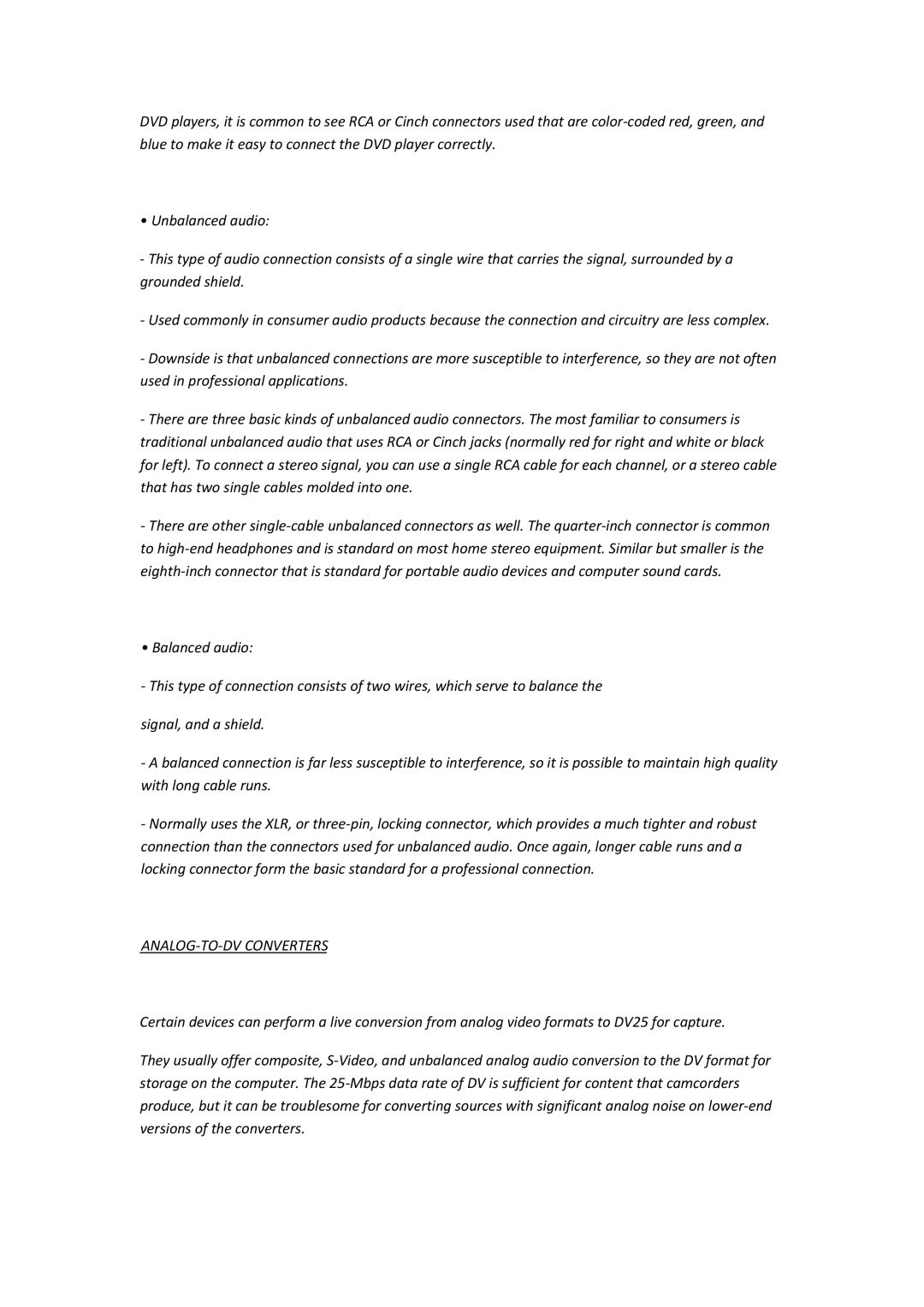DVD players, it is common to see RCA or Cinch connectors used that are color‐coded red, green, and blue to make it easy to connect the DVD player correctly.
• Unbalanced audio:
‐This type of audio connection consists of a single wire that carries the signal, surrounded by a grounded shield.
‐Used commonly in consumer audio products because the connection and circuitry are less complex.
‐Downside is that unbalanced connections are more susceptible to interference, so they are not often used in professional applications.
‐There are three basic kinds of unbalanced audio connectors. The most familiar to consumers is traditional unbalanced audio that uses RCA or Cinch jacks (normally red for right and white or black for left). To connect a stereo signal, you can use a single RCA cable for each channel, or a stereo cable that has two single cables molded into one.
‐There are other single‐cable unbalanced connectors as well. The quarter‐inch connector is common to high‐end headphones and is standard on most home stereo equipment. Similar but smaller is the eighth‐inch connector that is standard for portable audio devices and computer sound cards.
•Balanced audio:
‐This type of connection consists of two wires, which serve to balance the
signal, and a shield.
‐A balanced connection is far less susceptible to interference, so it is possible to maintain high quality with long cable runs.
‐Normally uses the XLR, or three‐pin, locking connector, which provides a much tighter and robust connection than the connectors used for unbalanced audio. Once again, longer cable runs and a locking connector form the basic standard for a professional connection.
ANALOG‐TO‐DV CONVERTERS
Certain devices can perform a live conversion from analog video formats to DV25 for capture.
They usually offer composite, S‐Video, and unbalanced analog audio conversion to the DV format for storage on the computer. The 25‐Mbps data rate of DV is sufficient for content that camcorders produce, but it can be troublesome for converting sources with significant analog noise on lower‐end versions of the converters.
